12 Tandem Skydiving Myths Debunked: Separating Fact From Fiction

Skydiving facts and myths are often incorrectly intertwined! Before you take the exhilarating leap from a perfectly good airplane, let’s clear the air (hehe) and debunk the most common skydiving myths floating around our glorious sport. Buckle up and hold on, because we’re about to unravel some common mysteries surrounding tandem skydiving.
Myth #1: Skydiving Is Extremely Dangerous
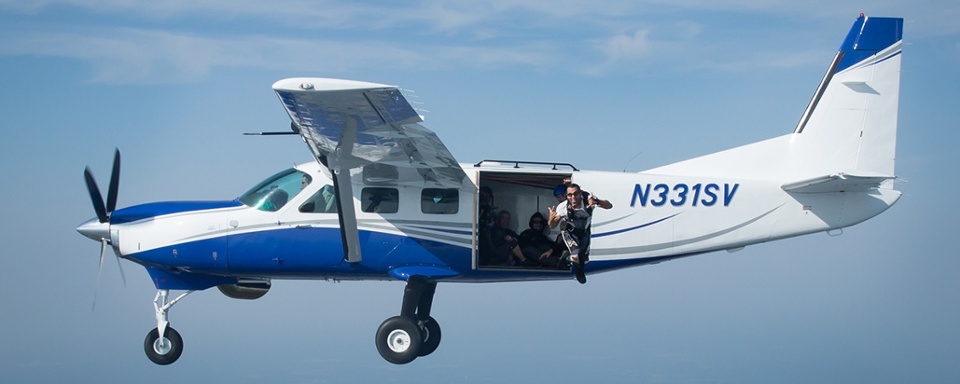
Just because a sport is extreme and potentially dangerous, does not mean it is extremely dangerous. Read that again. It’s a no-brainer that skydiving holds inherent risk – it entails chucking your body from an airplane about two miles above the earth. However, the risk associated with the sport is extremely calculated.
Let’s take a look at some statistics: According to the United States Parachute Association (USPA), about 3.65 MILLION skydives were made in 2023. Out of these, 10 resulted in fatalities – that’s 0.000274%, or 1 in 370,000 jumps. For comparison, the odds of dying in a car accident are 1 in 93 … soooo, you can see why planes are our preferred mode of transportation!
Myth #2: It’s So Scary You’ll Pass Out
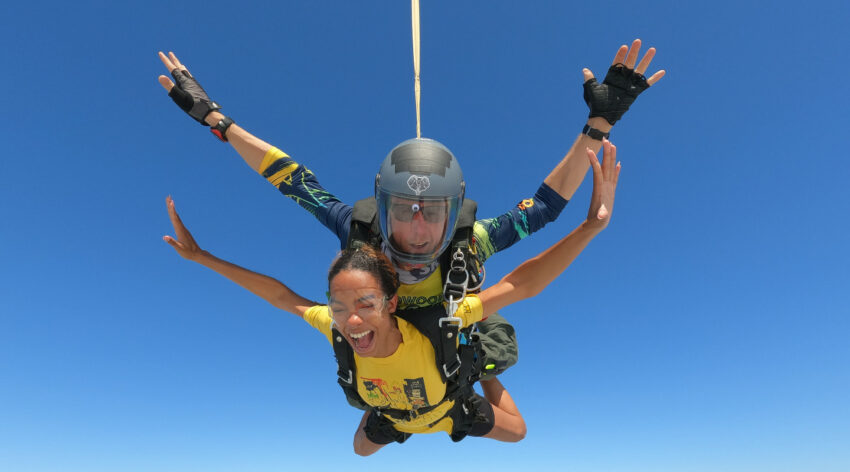
Passing out while skydiving is much more rare than most people think! Why? It’s typically preventable. Staying hydrated, fed, and getting a doctor’s clearance if you have any prior concerns sets you up for success. Woah, do you need a physician’s approval to take the leap? Not necessarily – but if you have an established issue, like high blood pressure, it can be beneficial to talk with your doc about your concerns beforehand.
What if you do pass out? The tandem instructor with you is a trained professional who is equipped to handle a range of situations – you could transform into a unicorn in the sky and they would be able to guide the situation with a safety-first mindset! Remember: As a tandem student, your job is to listen to your instructor and follow their directions – especially in case of any mishaps.
Myth #3: Skydiving Is Only For Adrenaline Junkies
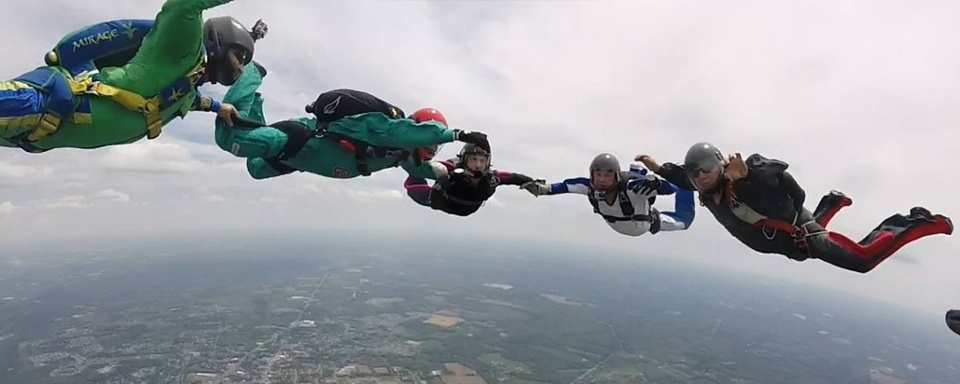
Negative, ghost-rider. We don’t have actual statistics to prove that skydivers hail from all backgrounds and professions, so we’ll just share a few personal tidbits. We know avid skydivers who are parents, teachers, first-responders, students, doctors, business owners, lawyers, bankers, police officers – you name it!
Veteran skydivers, or tandem students trying it for the first time, aren’t typically chasing adrenaline. Rather, they’re seeking a new experience with like-minded people! Skydiving gives us serenity and freedom unlike anything else, the adrenaline is just an added benefit.
Myth #4: Main Parachutes Frequently Fail
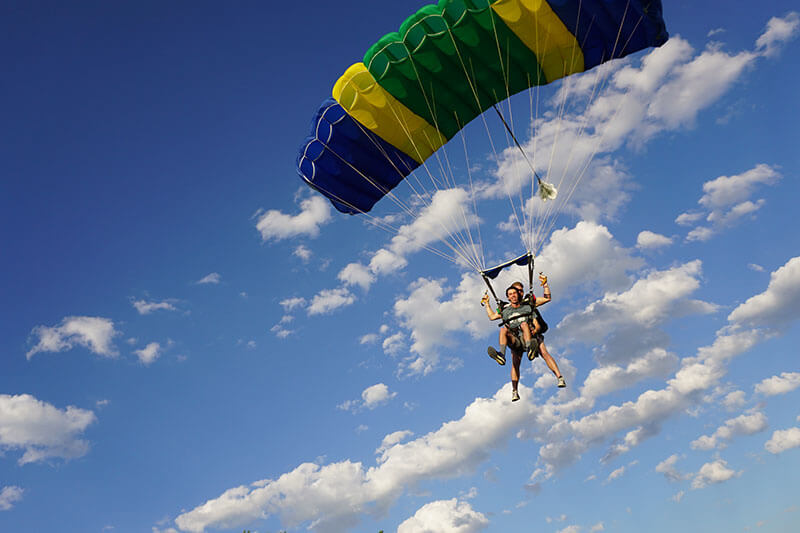
How many skydives go wrong? Not nearly as many as you may think! In 2023, it’s estimated that 12% of skydivers used their reserve parachute. Some jumpers reported using their reserve more than once, making the estimated amount of reserve rides just under 5,000. (That’s 0.1370%, if you’re keeping score.)
Skydivers take meticulous care of their gear to ensure it’s up to standard. Being diligent in gear upkeep and proper packing significantly decreases the chance of a malfunction that results in a cutaway.
Remember: Parachutes are designed TO OPEN SAFELY! They stand as our trusty companion waiting to breathe the air and guide us back to earth.
Myth #5: It’s Common For Tandem Instructors To Lose Consciousness
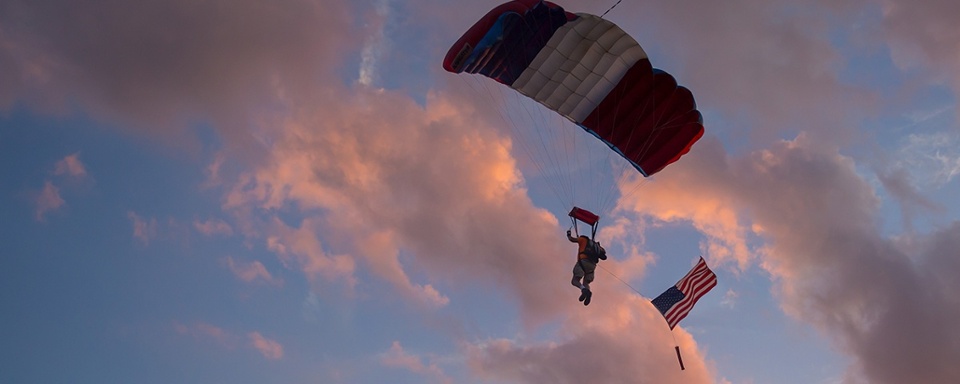
Nope – it is incredibly rare for any dedicated skydiver or tandem skydiving instructor to faint while jumping.
BUT, what if they do? Well – it’s a good thing skydivers come prepared! Skydiving rigs are equipped with a nifty piece of equipment called an Automatic Activation Device (AAD). This miniature computer calculates velocity and altitude. If the AAD determines the skydivers is too low and falling too fast, the AAD is designed to deploy the reserve canopy. AADs save lives!
Myth #6: Skydiving Is Only For Rich People
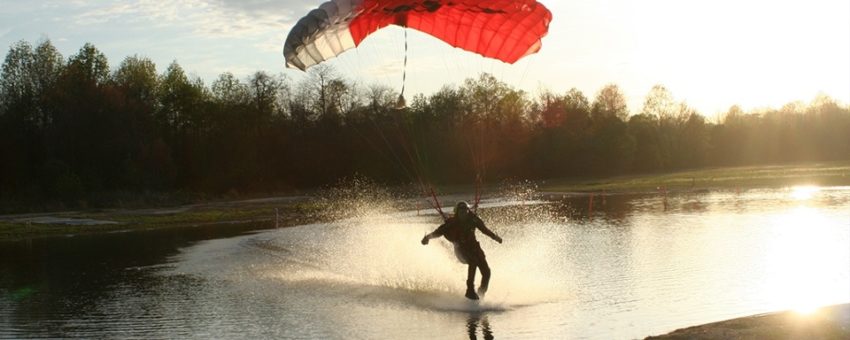
This could not be further from the truth. However, we totally understand the misconception – skydiving is expensive upfront. The neat thing about the sport is that the costs associated with skydiving significantly decrease after gaining your solo skydiving license and investing in your own gear.
Why is tandem skydiving so expensive? There’s a lot that goes into it! The tandem skydiving cost not only covers compensation for your instructor, but use and maintenance of the aircraft, jet fuel, pre-jump training, and a safety-first freefall, parachute ride, and landing.
Myth #7: You Can’t Breathe During Freefall
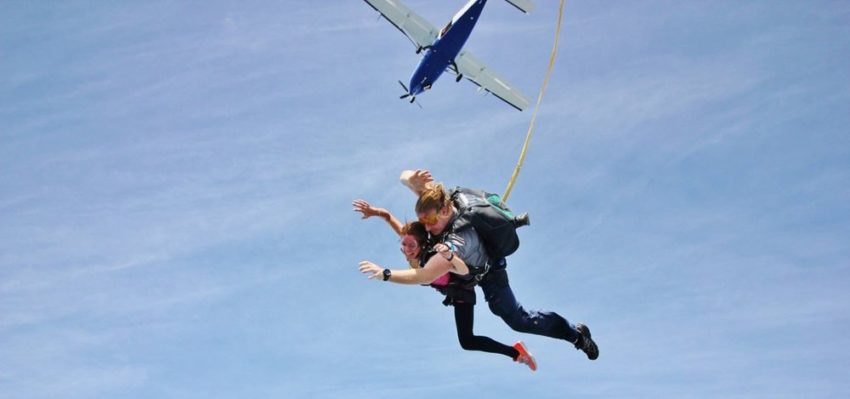
Can you breathe while skydiving? Absolutely – there’s plenty of air up there, and it’s self-serve! The zippiness of the wind combined with an accelerated heart rate can make people feel like they can’t catch their breath. Our best advice? Relax! If that doesn’t work, scream! Yelling something (anything!) while in freefall forces your body to take a big, deep breath back in to get you back on track.
Myth #8: You’ll Feel Like You’re Falling
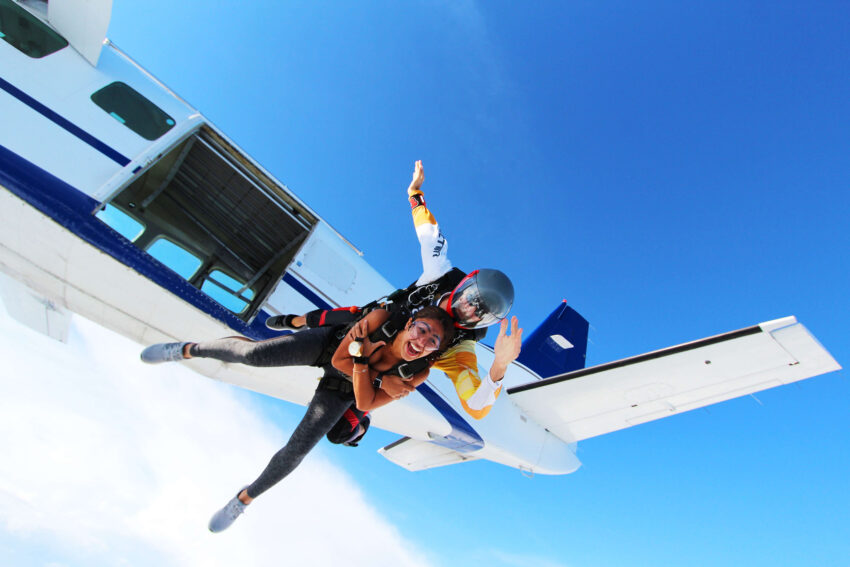
Does skydiving make your stomach drop? Not initially. The roller-coaster tummy feeling can happen while under the parachute because of centrifugal force. The cool thing is that tandem instructors (and solo skydivers) can control the aggression of the turns made under the canopy. If you love the butterflies in your stomach, ask for more intense turns, and if you despise them, let your tandem instructor know you’d prefer a more docile canopy flight!
Myth #9: You Land Wherever The Wind Takes You
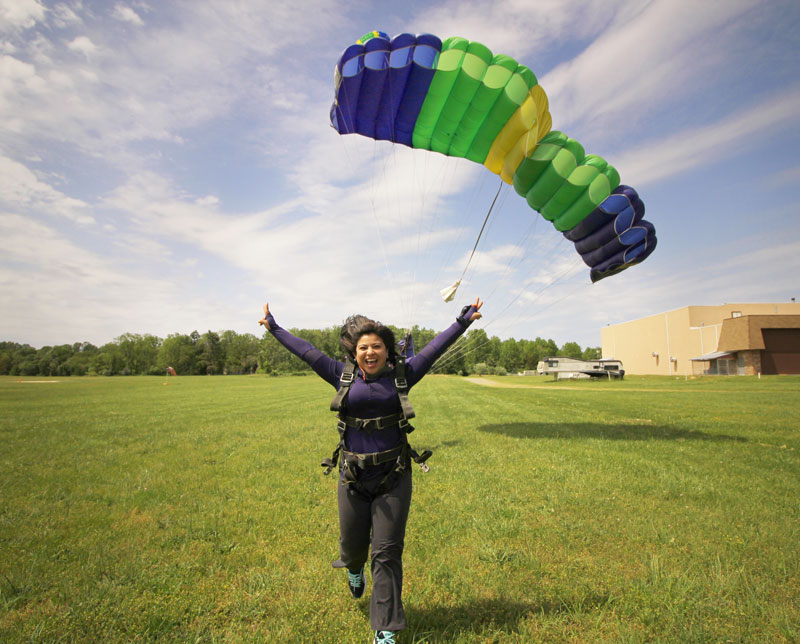
Parachutes are intricately designed in a way that allows skydivers to adjust, or pilot, where they go. Of course, super strong winds could override this ability, which is why we never jump in unsafe conditions!
Unlike the round, military-style parachutes the pioneers of our sport used, modern-day skydivers use RAM-AIR parachutes that are rectangular. The way they’re crafted allows jumpers to create lift and stability while controlling descent. The steering lines enable skydivers to give input to control the degree and direction of descent.
Myth #10: You Have To Be Young And Super Fit To Skydive
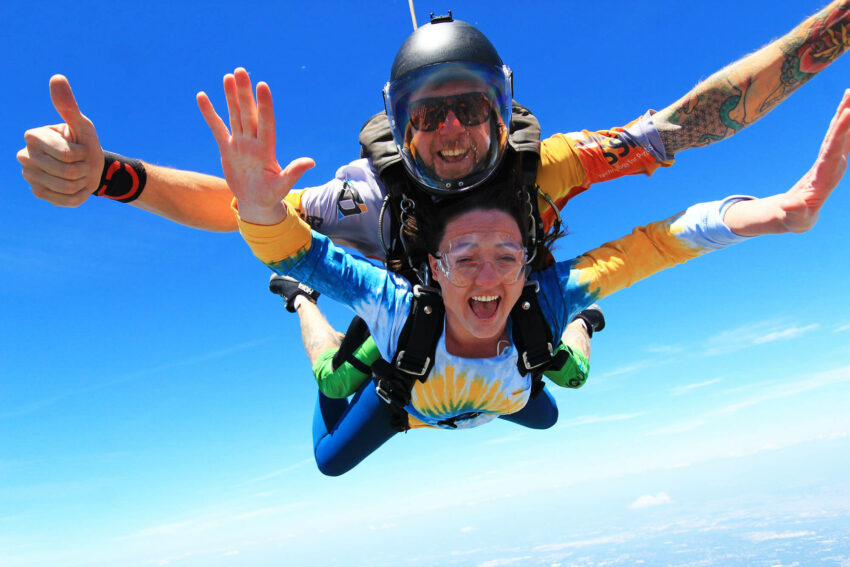
People of all ages (over 18), shapes, and sizes go skydiving all the time! Who should not do skydiving? At Skydive Cross Keys, we have a weight limit of 250 lbs and require you to be in generally good health. Tandem skydiving entails squatting into a plane, being able to do an “arched” position in freefall, and lifting the legs for landing. We always suggest getting the go-ahead from your doc prior to jumping if you have back, neck, shoulder, or heart issues!
Do heavier people fall faster skydiving? Yep! In skydiving, gravity and air resistance are the two forces that affect us. Heavier people have more mass, and therefore will fall faster. How can we all jump together? By controlling our fall rate! We do this by adjusting body positions and increasing or decreasing our drag.
Myth #11: You’ll Get Sick While Skydiving
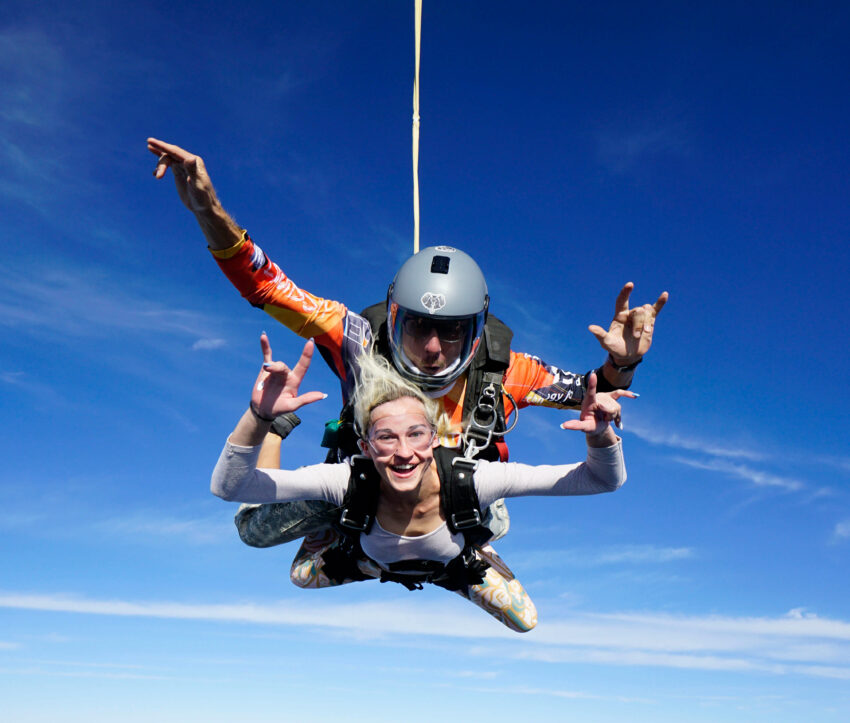
Do you think almost four million skydives would’ve been made last year if it made people constantly ill? We sure don’t!
Okay, okay, but what if you still get sick? It’s all good in the hood! We have the occasional tandem student lose their cookies and although it is unpleasant for a few minutes, it’s all okay in the end! Remember, your instructor is available to help you and will know how to handle this potential (albeit, rare) situation.
Myth #12: You Need Lots Of Training To Tandem Skydive
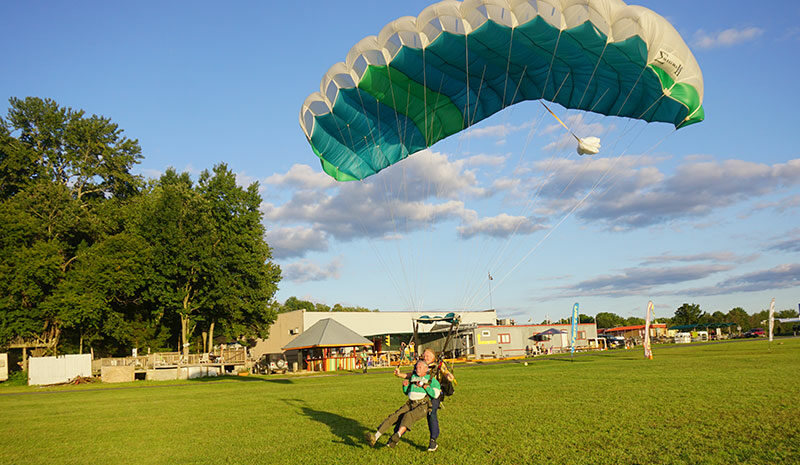
Training prior to a tandem skydive only takes about 10 to 20 minutes. We love tandem skydiving, because it enables total novices to experience the glory of our sport. Does this mean you can be a complete rock in the sky? Nah. Tandem students play a critical role in ensuring the skydive goes smoothly. The most important thing you can do as a tandem student is listen to your instructor!
Note: We do suggest planning to spend four hours with us when you book a tandem! Why? We like to expect the unexpected – like weather delays, general scheduling issues, and anything else thrown our way.
Are you ready to skydive? Book your jump! Not ready to make the leap? Feel free to contact us about other myths about skydiving or to ask questions – we’re here to support you! Blue skies.